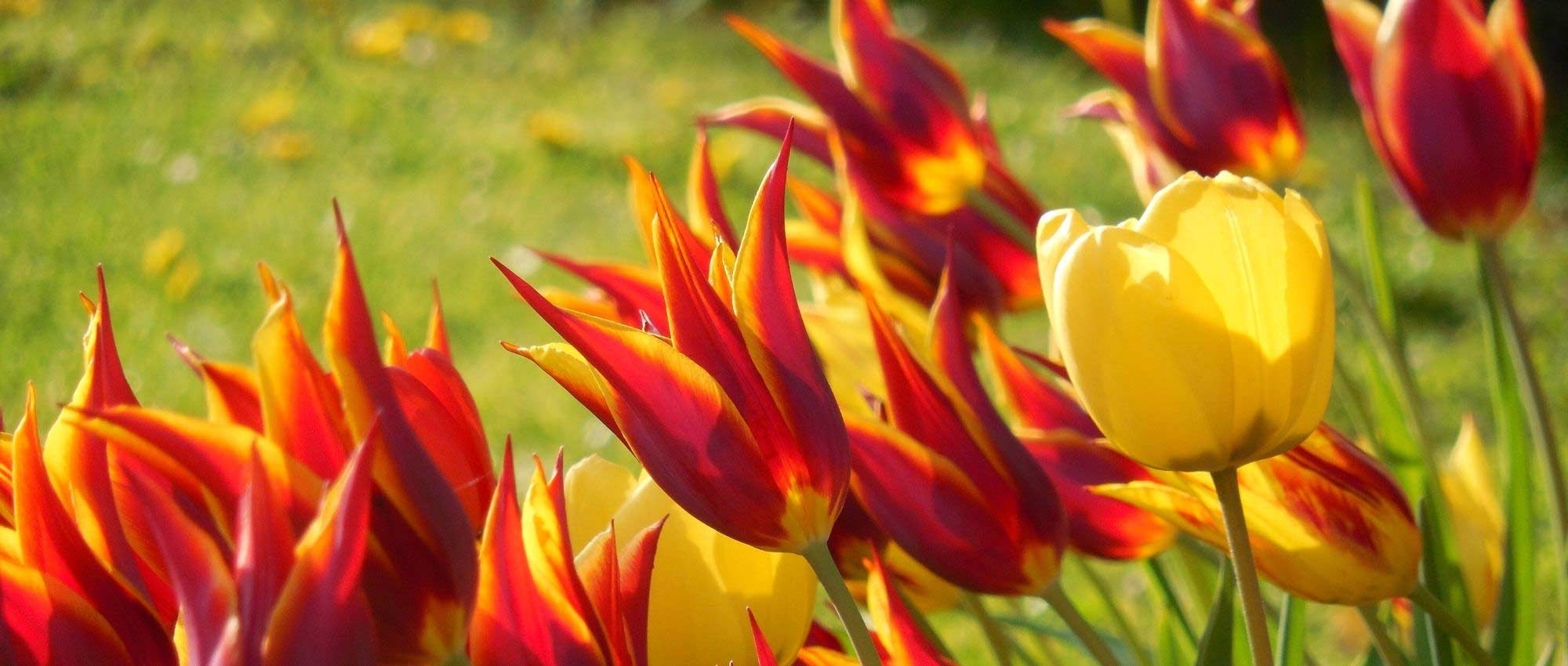
Bulbs: how many to plant to create a beautiful border?
All our tips!
Contents
Bulbous plants are appreciated for their superb flowering, often very colourful. They can be spring flowering, such as tulips, hyacinths and crocuses, or summer flowering, such as lilies and gladioli. However, it is not easy to know how many bulbs to buy and how many to plant to create a flowerbed. Follow our guidance and tips to help you work it out, depending on the bulbs you grow!
And to ensure successful planting, read Ingrid’s article on our blog “Planting bulbs: 7 practical and useful tips”
Planting too many bulbs or not enough: what are the consequences?
When planted too densely, plants may interfere with each other. They will compete for mineral nutrients, water and light, and may not have room to develop properly. This can also encourage development of fungal diseases. Moreover, when bulb plantings are very dense, the effect can appear artificial, even “overdone”, whereas a bed looks more natural when there are slightly fewer bulbs.
Conversely, if bulbs are planted too far apart, the visual effect is less striking, less attractive. The bed may seem rather poor, and adventive plants will have more space to develop.
Planting an adequate number of bulbs produces a dense, colourful visual effect without bulbs interfering with one another. However, gardening is not an exact science! Because one works with living material, results are subject to various uncertainties, and some bulbs will perform better than others. If you notice bulbs are slightly damaged before planting, some may fail to come up; in that case you can increase planting density slightly at planting time as a precaution.
To determine how many bulbs to plant, keep in mind the visual effect you want: if you want a very colourful display with a multitude of flowers, plant more densely than if you want a delicate, natural look.
D’une manière générale, les plantes qui ont de petits bulbes, comme les Crocus, Snowdrop ou Chionodoxa, gagnent à être plantés en masse, fairly densely and over a large area. Plant them in groups of at least 50 bulbs! Their flowers are small and discreet, so many are needed to make a visible impact… otherwise the result can look rather ridiculous. In addition, these bulbs tend to spread naturally over time and can even naturalise! Conversely, plants with large bulbs, such as the Imperial fritillary or the Lily, are more effective planted alone or in small groups. Their flowering is impressive, so they are better showcased that way.
If you plant, for example, a large number of imperial fritillaries in a small area, the effect may feel suffocating, oppressive… Even more so in a small garden, as their bright colour can overpower the space (in that case prefer plants with soft tones, such as blue or mauve).
Regarding bulbs of Tulips or of Daffodils, we recommend planting at least ten of the same variety together to achieve a pleasing effect.
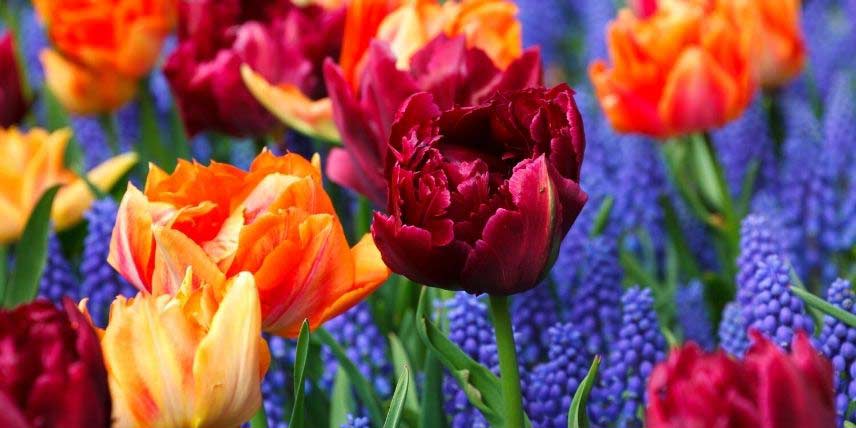
Tulips and Muscaris
For further reading: see Pierre’s article: Small bulbs, big effect and Hélène’s advice sheet: 6 bulbs easy to naturalise in the garden.
Read also
Bulb sizes: how to choose?Tips for planting your bulbs
If you plant in a small space, choose a single colour, as this will visually enlarge the bed. Mixing colours, however, can make space look much smaller.
There are several ways to plant bulbs: you can place them in a very homogeneous pattern at regular intervals, which will give a neat, orderly effect…or, conversely, distribute them more randomly, for example by tossing them onto soil and planting them where they fall! This will create a very natural look.
You can dig one large planting hole the size of area you wish to plant, or make individual holes with a bulb planter (for more occasional plantings, or in an existing bed). Make sure to plant them point upwards and short stem of bulb (flatter part) facing downwards. This will help them sprout correctly, although some bulbs may manage to right themselves if placed the wrong way round. Also ensure they are planted in free-draining substrate, mixing coarse sand into planting soil if necessary to prevent rotting. It is also important to respect an adequate planting depth (they are generally buried two to three times their height).
Some bulbs are planted quite close to one another (sometimes only 5 cm apart), but take care that they do not touch. That way, if one rots or develops a disease, you reduce risk of the problem spreading to other bulbs.
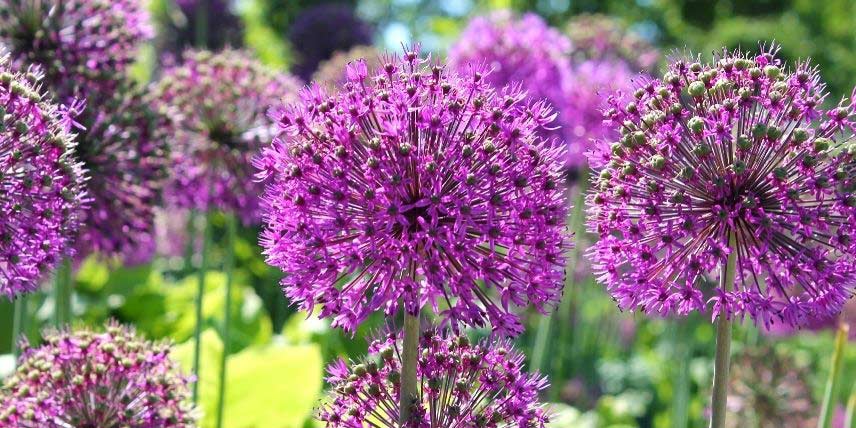
Ornamental garlic
Discover other Spring bulbs
View all →Available in 1 sizes
Available in 1 sizes
Available in 1 sizes
Available in 1 sizes
Available in 1 sizes
Available in 1 sizes
Available in 1 sizes
Available in 0 sizes
Available in 1 sizes
Available in 1 sizes
How many bulbs to plant?
| Species | Distance between bulbs | Density (number of bulbs per m²) |
| Allium | 10 cm for the smallest (Allium sphaerocephalon…) and 30 cm for the largest (Allium schubertii, Allium ‘Globemaster’…) | From 10 per m² for the largest, up to 100 per m² for the others |
| Anemone blanda | 10 cm | Up to 100 per m² |
| Anemone coronaria | 10 to 15 cm | 65 per m² |
| Camassia | 20 cm | 25 per m² |
| Crocosmia | 15 cm | 30 to 40 per m² |
| Crocus | 8 cm | Up to 150 per m² |
| Chionodoxa | 7 cm | Up to 200 per m² |
| Colchicums | 10 to 15 cm | 50 to 100 per m² |
| Dahlias | 30 to 50 cm for small varieties, and 80 cm to 1 m for the largest | 1 per m² for the largest, up to 6 per m² for the smaller varieties |
| Neapolitan cyclamen | 20 cm | 25 per m² |
| Erythronium | 15 cm | 40 per m² |
| Eucomis | 35 cm | 5 to 8 per m² |
| Snake’s head fritillary (Fritillaria meleagris) | 10 cm | Up to 100 per m² |
| Crown imperial | 20 to 25 cm | 15 to 25 per m² |
| Gladiolus | 15 to 20 cm | 30 per m² |
| Ipheion | 10 cm | Up to 100 per m² |
| Hyacinths | 12 to 15 cm | 40 to 60 per m² |
| Lilies | 20 cm, or more | Between 5 and 20 per m² |
| Muscari | 8 cm | Up to 150 per m² |
| Daffodils | 10 to 15 cm | Between 25 and 70 per m² |
| Spring snowflake | 8 to 10 cm | 100 per m² |
| Snowdrops | 8 cm | Up to 150 per m² |
| Florist’s ranunculus | 10 cm, or more | 20 per m² |
| Scilla | 8 to 10 cm | 100 per m² |
| Tulips | 10 to 20 cm | 40 to 70 per m² |
| Species tulips | 10 cm | Up to 100 per m² |
These values are indicative; they may vary slightly depending on variety you grow. Some of these figures may seem impressive, however they indicate number of bulbs needed to obtain a full, relatively dense display. It is also possible to plant at wider spacing.
Planting density is given per m², but you are of course not obliged to plant one m² of bulbs! You can also create small beds of 0.4 or 0.5 m². In that case, simply multiply number of bulbs by area to cover.
If you want to plant over 0.4 m², multiply number of bulbs (for 1 m²) by 0.4.
→ For example, for Camassias, density is 25 bulbs per m²:
25 x 0.4 = 10
So plant 10 bulbs on 0.4 m²
And if you want to combine bulbs by planting different varieties together, divide quantities for each by two (if combining two different plants), by three, four, etc.
→ For example, for a border composed of Muscari, Hyacinths and Anemone blanda:
Muscari: 150 / 3 = 50
Hyacinths: 50 / 3 = 16
Anemone blanda: 100 / 3 = 33
You should therefore allow, for 1 m²: 50 Muscari bulbs, 16 Hyacinth bulbs and 33 Anemone blanda bulbs.
And if you want to plant this combination on only 0.5 m² (for example a bed 50 cm by 1 metre), multiply each number of bulbs by 0.5.
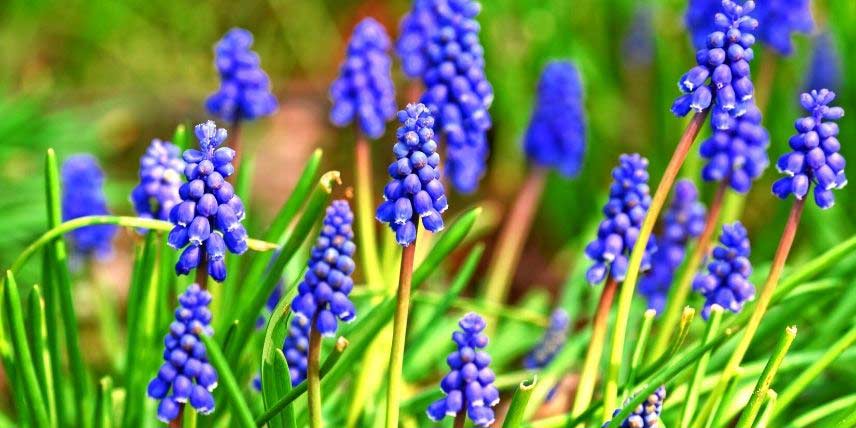
Muscari bulbs are planted 8 cm apart
- Subscribe!
- Contents
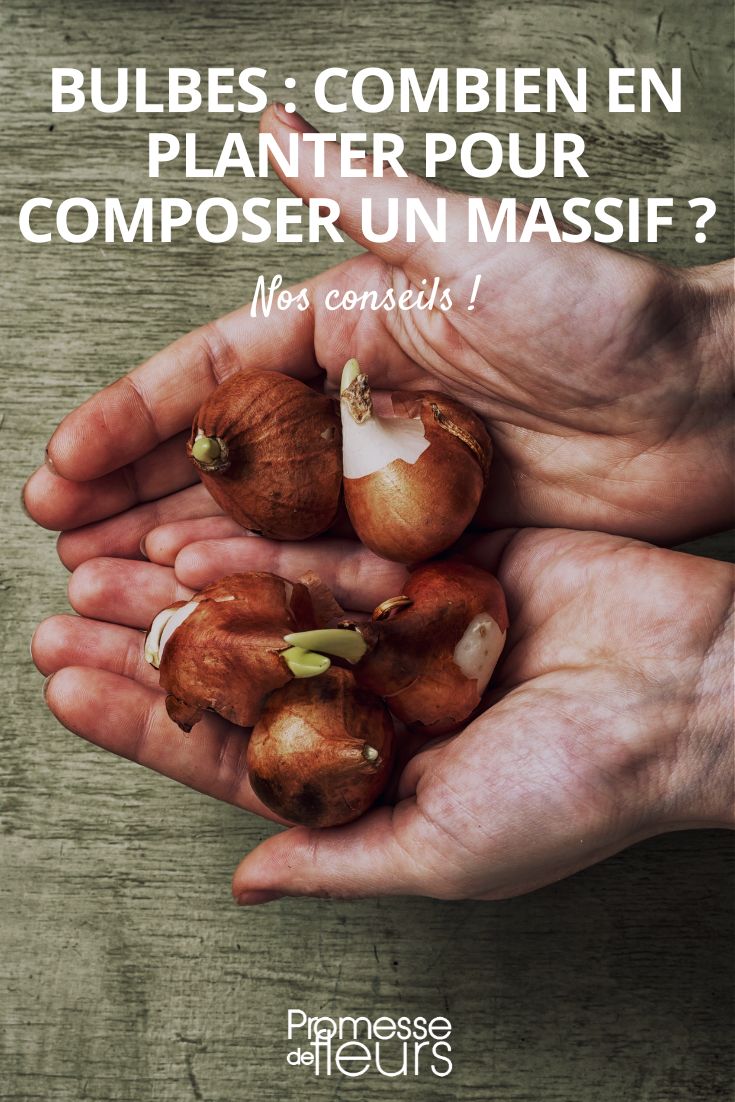































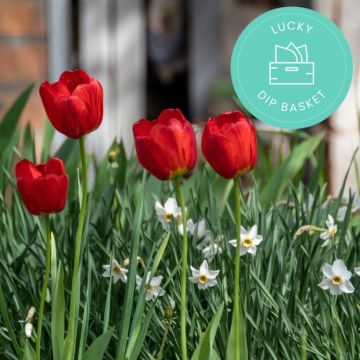
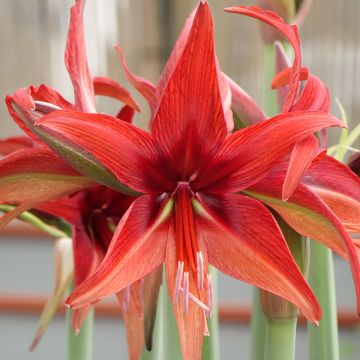
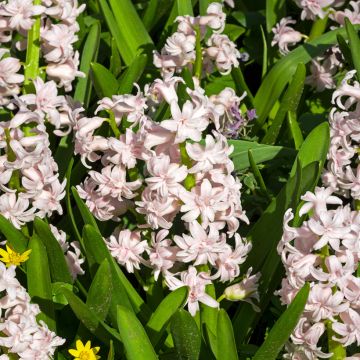
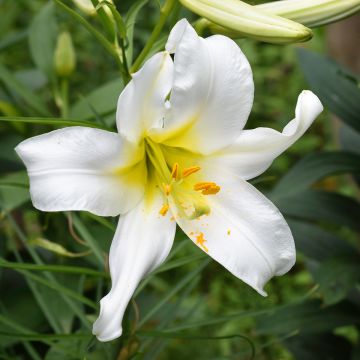
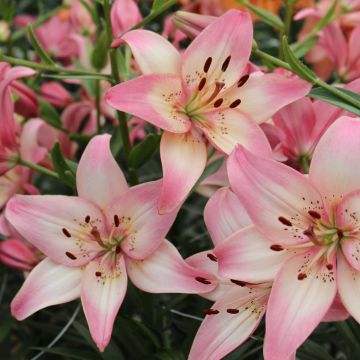


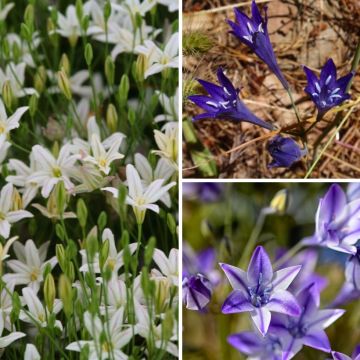

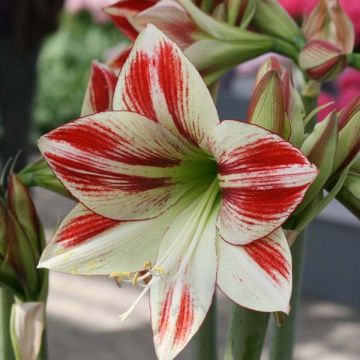
Comments